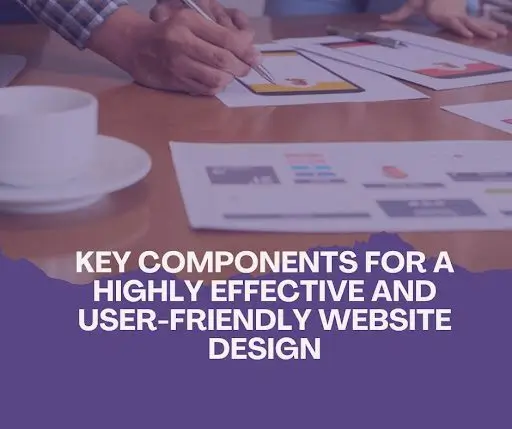If you’re interested in becoming a modern developer, then full-stack development is a must-have skillset. Full-stack developers, often referred to as software engineers, are in high demand because they have the ability to work on both front-end development and back-end development of web applications. In this article, we’ll provide you with a comprehensive guide to full-stack development. We’ll cover everything from understanding full-stack development to building your first application, advanced topics, testing, and deployment, and more. By the end of this guide, you’ll have a solid understanding of full-stack development and be well on your way to becoming a modern developer.
Understanding Full-Stack Development
Full-stack development refers to the process of building web applications that include both front-end development and back-end development layers. A full-stack developer is someone who has the skills to work on all three layers: the front-end, the back-end, and the database. The front-end layer is responsible for the user interface and user experience of the application, emphasizing user interactions. The back-end layer is responsible for the server-side logic and communication with the database, which often involves managing database queries. The database layer is responsible for storing and retrieving data using database management systems, including relational databases.
Becoming a full-stack developer requires mastering the art of both front-end and back-end development. Dive into the world of HTML, CSS, and JavaScript, and unlock the secrets to creating stunning websites and applications. Some of the popular back-end development technologies include Node.js, Ruby on Rails, and Django. Additionally, you’ll need to have a good understanding of databases such as MySQL and MongoDB. If you are new to full-stack development, consider exploring the beginner’s guide for full-stack development which offers basic knowledge and skills to build web applications from scratch using modern technologies and tools.
Essential Skills for Full-Stack Developers

To become a successful full-stack developer, there are several key skills that you’ll need to master. These include:
HTML/CSS
HTML is the foundation of any web application and is essential in front-end development for structuring web pages. CSS is used to style and layout web elements, making them visually appealing in front-end web development.
JavaScript
JavaScript is a programming language that’s used to add interactivity to your web pages, a critical skill for front-end developers. You’ll need to have a deep understanding of JavaScript syntax and how to use it to manipulate the Document Object Model (DOM). Explore how JavaScript plays a vital role in today’s web development. It allows developers to create interactive and user-friendly interfaces, while also connecting the front-end and back-end parts of a website
Server-side programming
In back-end development, you’ll need to know how to write server-side code. This includes languages such as Node.js, Ruby on Rails, and Django.
Database management
In the context of relational databases, you’ll need to know how to work with databases such as MySQL. For NoSQL databases like MongoDB, understanding how to create collections, insert data, and perform complex database queries is essential.
Building Your First Full-Stack Application

A simple to-do list application is a great starting point for aspiring full-stack developers. It helps them apply essential skills, from setting up the environment to creating a user-friendly front-end and robust back-end with database integration. Even experienced professionals find value in building such applications as a refresher or to explore new technologies. The to-do list project remains versatile and educational for all levels of experience in full-stack development. Here’s an overview of the steps involved:
1- Set up your development environment
Before you can start building your full-stack application, you’ll need to set up your development environment. This involves installing the necessary software and tools. In the case of full-stack development, you’ll typically need to install Node.js, a popular JavaScript runtime, which will allow you to run JavaScript on the server side. Additionally, you’ll need to install MongoDB, a NoSQL database that is commonly used in full-stack development.
2- Create your front-end
In front-end web development, the user interface and user experience are paramount. To create the front-end, you’ll use a combination of HTML, CSS, and JavaScript. HTML provides the structure of your web pages, CSS is used to style and layout the elements on the page, and JavaScript adds interactivity and dynamic functionality. For your to-do list application, you can start by creating a simple user interface with input fields for adding tasks and a list to display the tasks. Utilizing front-end frameworks can enhance your development skills and streamline the process.
3- Create your back-end
The back-end of your application handles the server-side logic and communication with the database. In full-stack development, you have a variety of options for the back-end, including Node.js, Ruby on Rails, Python with Django, and more. For simplicity, let’s use Node.js as an example. With Node.js, you can use frameworks like Express.js to handle routing and create APIs for your front-end to interact with. You’ll write server-side code to handle requests from the front-end, such as adding and deleting tasks from the to-do list.
4- Connect to your database
To store and retrieve data for your application, you’ll need to connect to a database. In this case, we’ll use MongoDB, a popular NoSQL database. With MongoDB, you can store your tasks as documents in collections. You’ll need to set up a connection to your MongoDB database and write code to perform CRUD (Create, Read, Update, Delete) operations on the tasks collection, showcasing your database management skills.
5- Test your application
Testing is an essential part of the development process to ensure that your application works as expected. In full-stack development, you can use different types of testing, including unit testing to test individual components or functions in isolation and integration testing to verify how different components of your application work together. By writing comprehensive tests, you can catch bugs and ensure that your application functions properly, demonstrating your commitment to development skills.
Advanced Topics in Full-Stack Development
Once you’ve built your first full-stack application, it’s time to dive into more advanced topics to further expand your range of skills. Some of these topics include:
Microservices
Microservices are a way of breaking down large applications into smaller, more manageable services, a strategy often employed by full-stack web developers.
Containerization
Containerization, facilitated by tools like Docker, is a way of packaging your application into containers, making it easier to deploy and manage, showcasing your grasp of full-stack web development.
Scalability
As your application grows, you’ll need to ensure that it’s scalable to handle increased traffic and data. This includes using techniques such as load balancing and horizontal scaling, demonstrating your proficiency in development skills.
Testing and Deployment in Full-Stack Development

Testing and deployment are crucial aspects of full-stack development. You’ll need to ensure that your application works as expected and that it’s deployed correctly. Some tips for testing and deployment include:
Use unit testing and integration testing
Implementing rigorous unit testing ensures that individual components of your application work as expected, while integration testing ensures that all components work together as expected, a testament to your commitment to development skills.
Deploy to cloud platforms
Leveraging cloud platforms such as AWS and Azure simplifies the deployment and management of your applications, showcasing your understanding of modern deployment practices.
Use continuous integration and continuous deployment (CI/CD)
CI/CD is a way of automating the testing and deployment process, which saves time and reduces errors, reflecting your adoption of efficient development workflows.
Conclusion
In conclusion, full-stack development is an essential skill set for modern developers, including full-stack web developers. By understanding front-end development and back-end development, mastering essential development skills, building your first application, exploring advanced topics, and learning about testing and deployment, you’ll be well on your way to becoming a successful full-stack developer or software engineer. At Web Deve London, we’re committed to helping developers learn new skills and stay up-to-date with the latest technologies.







